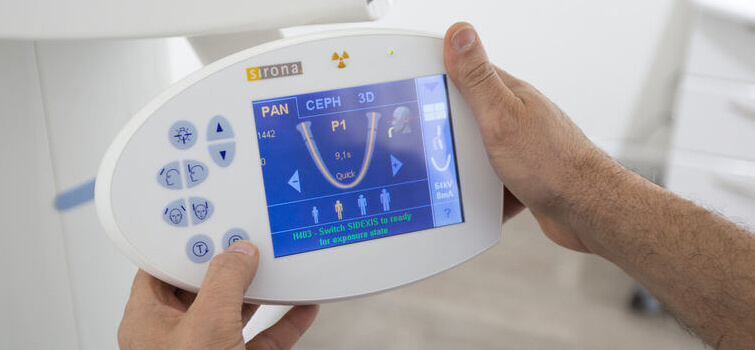Digital Imaging
Digital Radiography
The dentist chooses carefully which and when radiographs are taken. There are many guidelines that we follow. Radiographs allow us to see everything we cannot see with our own eyes. Radiographs enable us to detect cavities in between your teeth, determine bone level, and health of bone. We can also examine the roots and nerves of teeth, diagnose lesions such as cysts, as well as assess damage when trauma occurs.
Dental radiographs are invaluable aids in diagnosing, treating, and maintaining dental health. Exposure time for dental radiographs is extremely minimal. With digital imaging, our patients’ exposure to radiation is significantly reduced, 1/6th the amount of radiation exposure from older systems. Digital imaging can also help us retrieve valuable diagnostic information that is essential to treating your overall oral health.
Digital X-rays offer more precision in diagnosis since we view the image on a computer monitor, allowing us to adjust the image for a better resolution, instead of holding up a 35mm film up to the light.
Intra Oral Cameras
The introduction of high-resolution cameras enables us to show our patients any area of the mouth that may be of concern. This can be in video or stills mode and are displayed on the chairside monitors. These are excellent educational tools. The images can be stored digitally or as a photo print. The cameras have a number of benefits:
To highlight cracked teeth and fillings, decay cavities and gum disease.
To record soft tissue lesions on the tongue, palate, lips and cheeks.
To show before and after treatments e.g. changing a metal filling for a tooth coloured composite restoration….a chance for us to show off!
